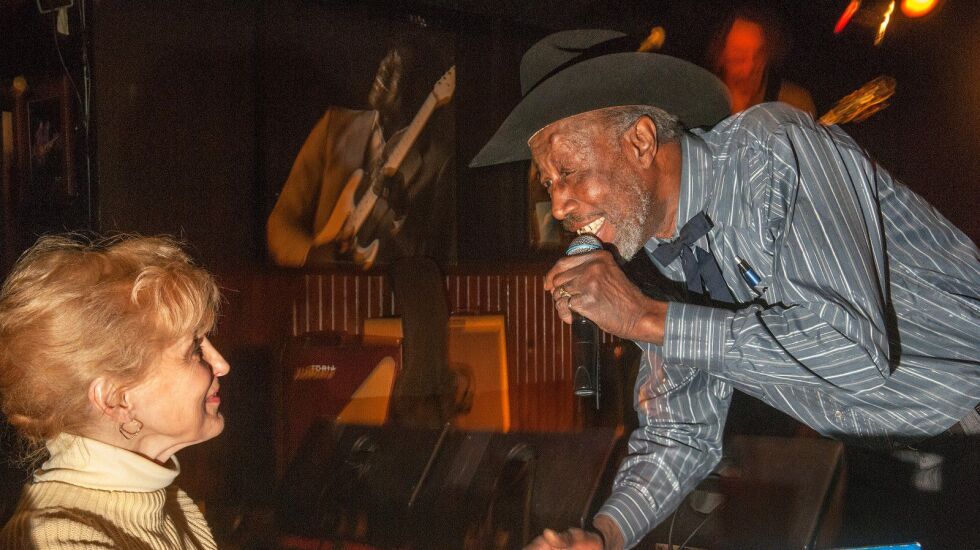
As a high-schooler in Beverly, Perez started bringing his camera to stadium shows by groups like Queen and Led Zeppelin. Soon, it became a life capturing the onstage and offstage moments of musicians, from blues legends like Muddy Waters and Tail Dragger to Mudhoney and Lou Reed.
Perez’s new book “Kill a Punk For Rock & Roll” ($34.99), published by Chicago’s HoZac Books, reflects many of those moments, with more than 200 pages of his photographs, spanning 1976 to 2019.
Perez says he’s still motivated to photograph new bands, but making a living at it has become harder due to the decline in print media and explosion in phone technology that puts a camera in everyone’s pocket.
“There’s definitely new folks coming up through the ranks keeping the music alive and the drive to capture it still resides in me,” he says. “But having it put money on the table nowadays has dried up.”
Here, Perez tells the stories behind seven of the book’s photos, each which captured a moment of life on the big stage. The photos also offer a look at long-shuttered music venues including the Chicago Stadium, Lounge Ax and B.L.U.E.S. on Halsted.
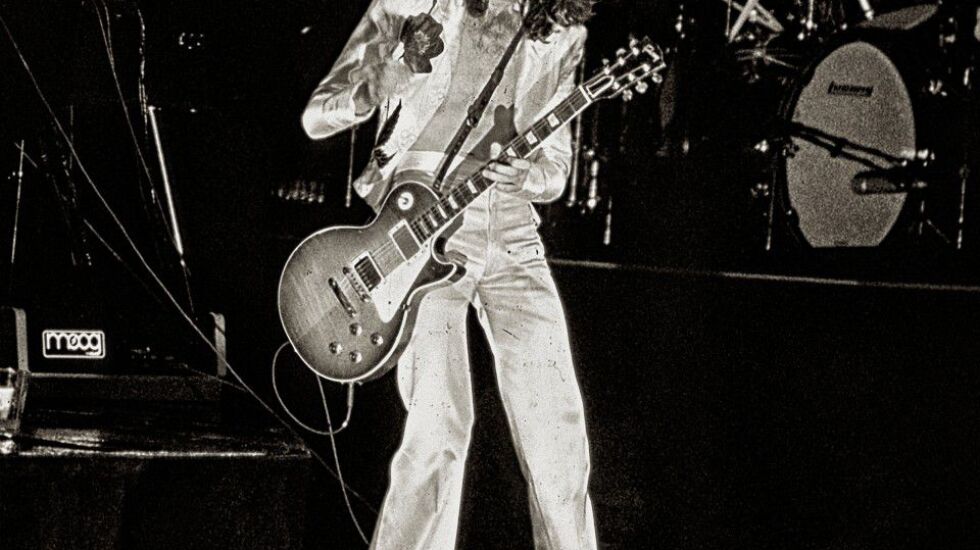
Jimmy Page of Led Zeppelin (1977)
Perez: “For me, a junior in high school at the time, it was a huge moment. No band was bigger than Led Zeppelin. It was the height of their ‘Golden God’ period.
“A friend and I took off Easter weekend, and we lined up Friday afternoon and sat the whole weekend with a bunch of other people in the parking of the Chicago Stadium, waiting for tickets to go on sale Monday. All hell broke loose in that first half hour before tickets went on sale. But we got tickets, and I was able to take photos from the 20th row.
“This shot was the product of luck. If the Instamatic camera held by the person in the front row didn’t flash, the shot would have been unusable. But it did, and you can see the dynamic of Jimmy Page and the light blinding the security guard. It’s a one-in-a-million type shot.”
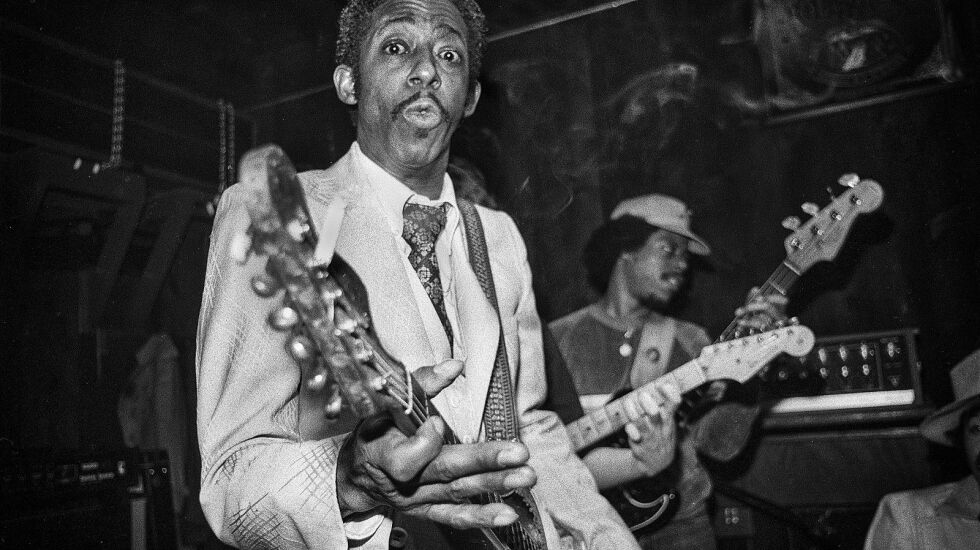
Lefty Dizz (1980)
Perez: “I was living in Seattle but returned to Chicago on Christmas. That was a traditional thing we’d do back then. There was nothing like the blues clubs in Chicago in the 1980s.
“That shot of Lefty was on a cold December night but at a hot show at B.L.U.E.S. on Halsted. It didn’t seem like he was on the larger blues radar. He was more of a hometown secret treasure. He was a showman. Stevie Ray Vaughan seemed to mimic Lefty’s mannerisms and showmanship. If Lefty had the long guitar chord, he was out in the audience just doing the guitar slinger thing. The popular version of the blues at the time was Robert Cray and that wimpy-sounding porno-movie soundtrack-type music. But in Chicago, you’d see Lefty Dizz and get punched in the face with the real Chicago style.”
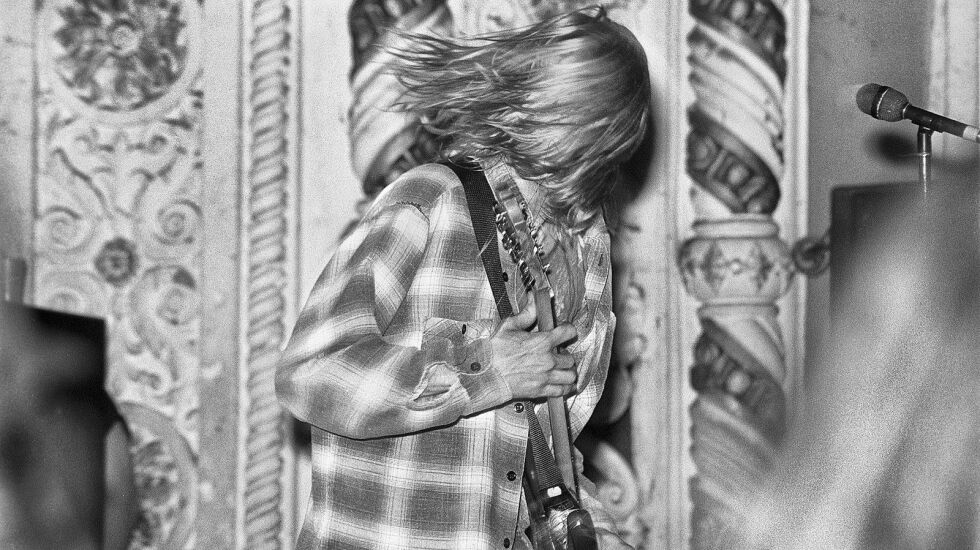
Nirvana (1989)
Perez: “This was my claim to fame. In the ‘90s, if you were a music photographer, Nirvana was the band that you hoped to shoot. This was one of their earlier tours. They were still with the original drummer” — Chad Channing. “They had been on the East Coast and were headed back to Seattle. They were all sick.
“Frankly, they really didn’t impress me that night. They were scheduled to open for Eleventh Dream Day at Metro. They had just released their first record. There was a big word of mouth. And, after they played, the place almost emptied out.
“They didn’t do that much for me at the time. I didn’t overextend myself to get shots of Kurt [Cobain] and the band. That shot is the best one I have. It perfectly sums up that pre-grunge thing. You have the hair, and he’s in the moment with the freak flag flying. And he happens to be wearing a flannel shirt.”
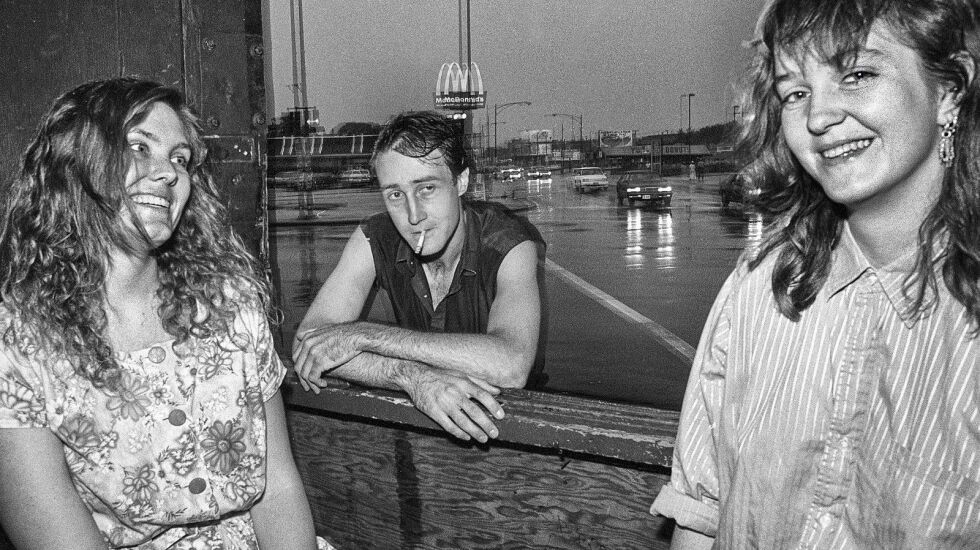
Freakwater (1989)
Perez: “Anybody who knows Chicago knows that intersection” — Clark and Addison streets — “no longer looks like that. Freakwater was an offshoot of Eleventh Dream Day. I had shot Eleventh Dream Day before, and the word of mouth around town was about this band that EDD drummer Janet [Bean] is playing in, and it’s a country band.
“It was a couple of months before their first record. The whole [1990s alt-country movement] hadn’t set in yet. Janet Bean and Catherine Irwin were digging deep into the country music catalogue that hadn’t been exploited. The harmonies between the two of them were unique and refreshing for that time. It was a hot afternoon right after their soundcheck. They were gracious to do a quick pose on that homemade foyer that the Cubby Bear had back then.”
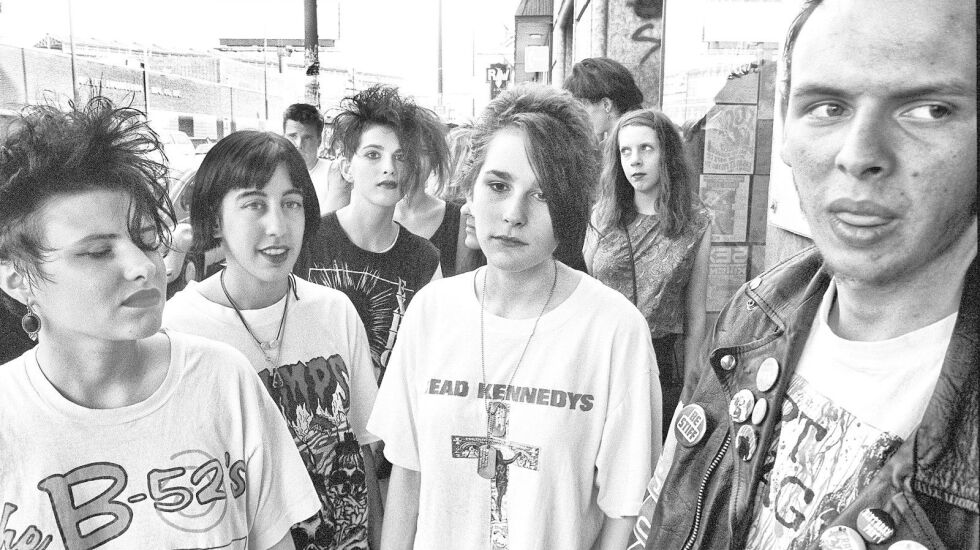
Fans outside Metro (1990)
Perez: “It was a Cramps show early in their career. I was photographing the opening band, which was the Flat Duo Jets. I got there early and had some time to kill.
“In those days, just like now, people started lining up for the show. Look at their faces. Anyone would have been captivated by that group. The guy on the right was the brother of one of those girls. Ten years later at the Vic, I was photographing the Cramps again for a publication. As I was leaving, a guy comes up and says, ‘Remember me?’ It was the same guy, but this time he was the road manager for the Cramps. It shows you how small of a world it is.
“He said he moved to California after that Metro show and somehow ingratiated himself into their organization as a roadie, and he was good enough they made him the road manager. If I’m not mistaken, he continued working with the band after [lead singer] Lux [Interior] died [in 2009], and they called it quits. That’s what can happen when you’re a fan of rock ‘n’ roll — you can join the beast.”
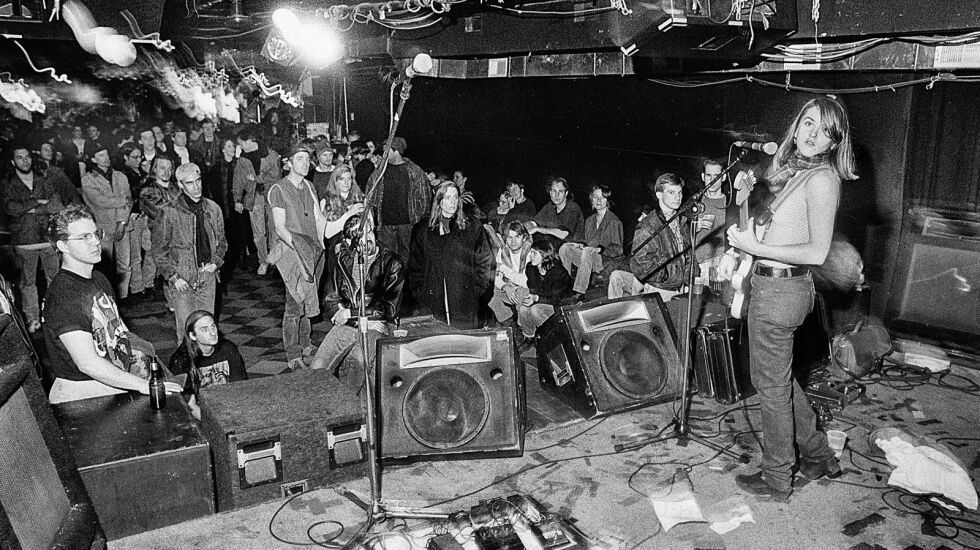
Liz Phair (1993)
Perez: “She was opening for Antenna at Lounge Ax. It was just her and a guitar. It was very early on, and it was a decent draw, but it wasn’t packed.
“That shot was in the middle of the performance. Hopefully, I wasn’t distracting her. When she was done with a song, she surveyed the house, and we happened to lock eyes. She was a small woman with a guitar with strong songs, and she held her own. And she took the stage and kicked ass.
“You kind of thought, ‘This woman’s so talented there’s a good likelihood that she was going to go somewhere.’ You never realized in nine months how far she’d take it. After that, she played a headlining record release show at Metro for ‘Exile in Guyville.’ And that show was packed.”
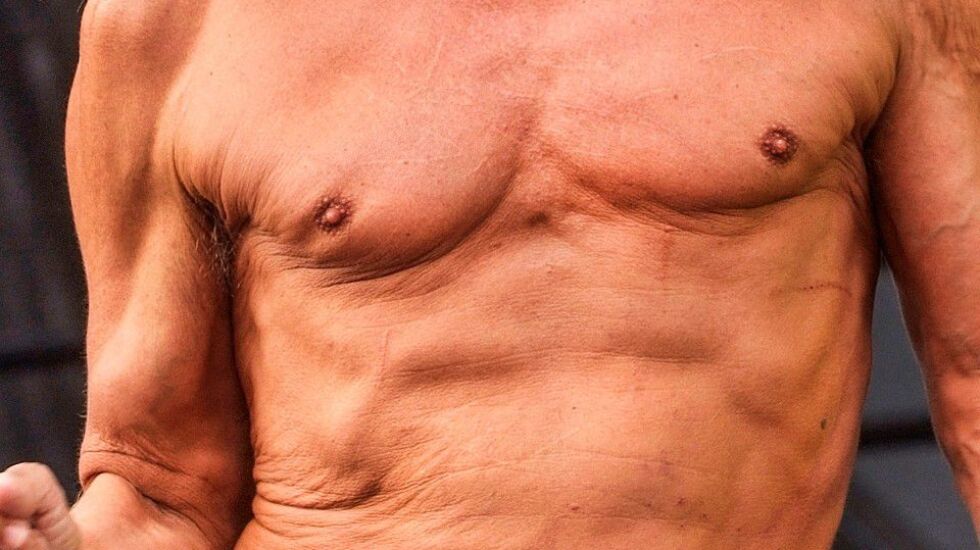
Iggy Pop (2007)
Perez: “The stuff that Iggy has done to his body over the years is legendary. And watching Iggy age is like watching how rock music has aged. He looks pretty good for a guy in his late 60s and early 70s.
“My reason for shooting him that way was to show the toll that Iggy put on his body. He’s still up there jumping around gyrating, and it doesn’t look too bad. In a silly way, I framed his body so his chest looks like the ‘sorting hat’ from the ‘Harry Potter’ movies.
“That was the first Stooges reunion at Lollapalooza. At least 100 people or more were up on stage with him by the end of the show.”







